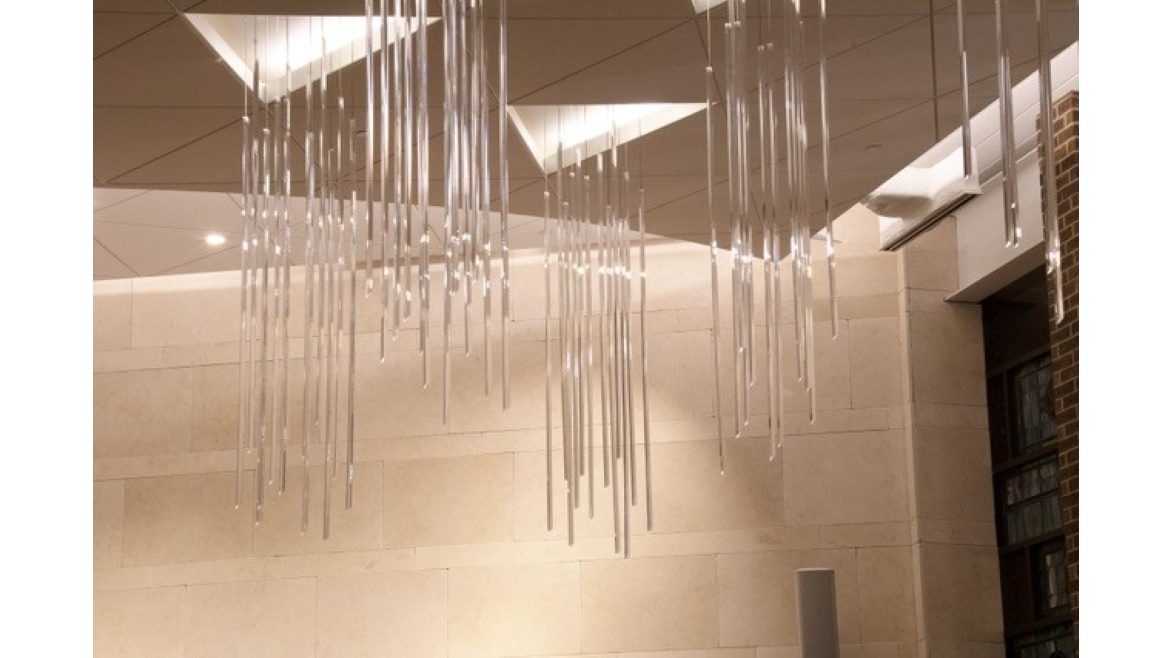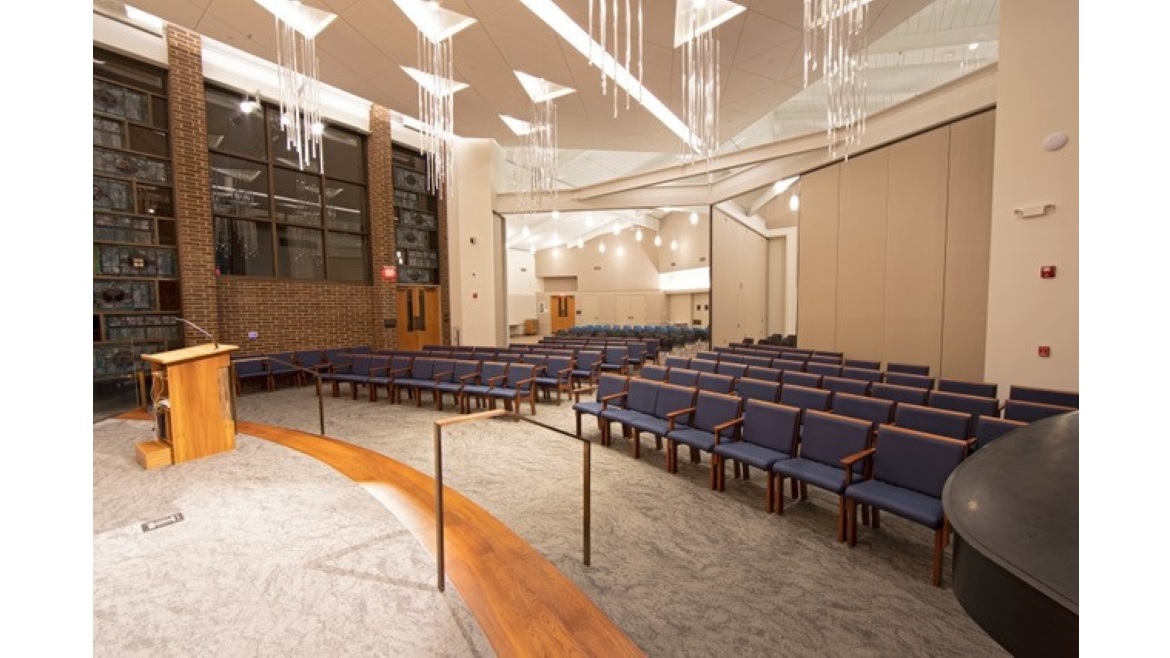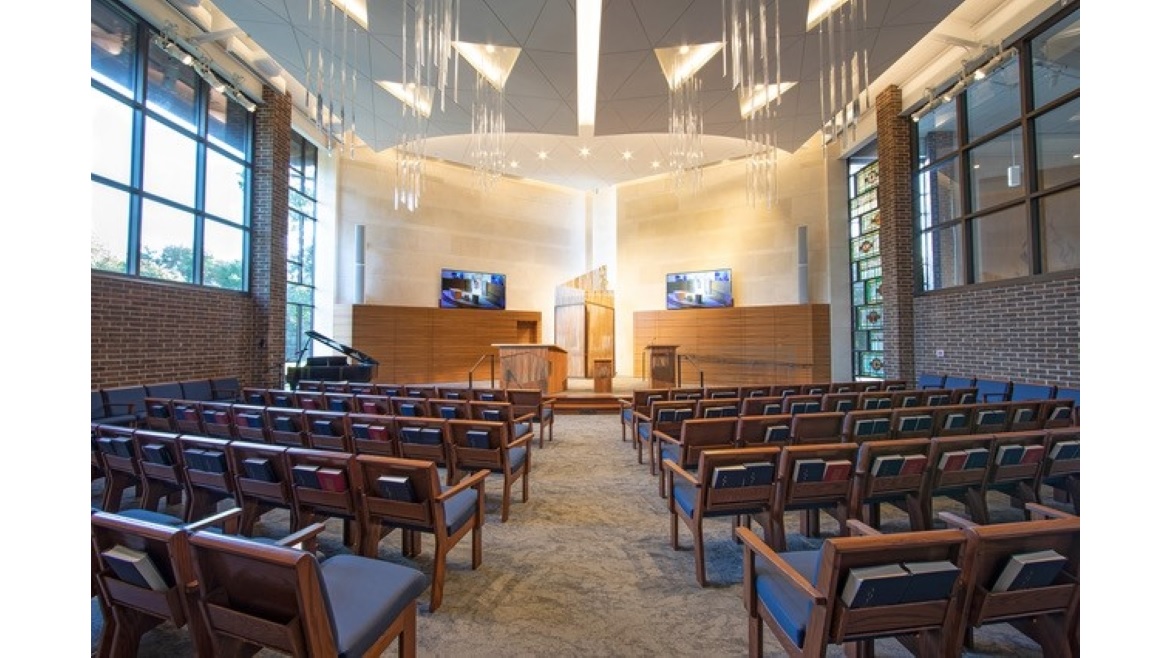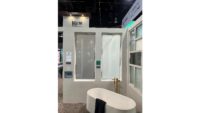In recent years, with in-person attendance dwindling across most U.S. denominations even prior to the pandemic, forward-thinking worship leaders and trustees are teaming up with consultants to rethink strategically how their existing houses of worship can promote growth and stability.
One example of this approach – a close collaboration with both leaders and members of the congregation, led by Landau Zinder Architecture – recently culminated in a major redesign of the sanctuary and social spaces at Sinai Temple in Champaign, Illinois.
The initial collaboration resulted in a master plan that includes a programming assessment of the nearly 40-year-old synagogue serving a 120-year-old reform congregation. Fast-forward to today, and the congregation now enjoys a completely reimagined sanctuary and social hall with inspiring new aesthetics and improved accessibility for all members, as well as enhanced security features and integrated audiovisual technology.

Photo courtesy of Landau Zinder
“For Sinai Temple, our goal was to leverage design to meet the security, safety, budgetary and technological needs and constraints of a 21st-century congregation while celebrating its unique history,” said Joshua Zinder, AIA, LEED AP, design architect and partner in the firm with Michael Landau, AIA. “And as with all of our work, we wanted the experiences of visitors and attendees to include inspiration, a feeling of nearness to the divine.”
As an example, Zinder points to the ceiling of the sanctuary, which had to be designed in a way that would create an atmosphere of inspiration while improving acoustics and concealing existing ductwork. Composed of acoustical tiles – but cut in triangular forms rather than rectangular – the dropped clouds are pitched to create a sense of heightened scale and focus.
Ten of the triangles (a number symbolic of the 10 Commandments) have no tile and serve instead as functional apertures for recessed LED lighting. From each of these, clear acrylic rods are suspended by cables, catching the illumination from above to evoke the notion of God’s radiance shining down upon congregants.
This and other innovative, sustainable design elements have transformed the space, elevating it beyond the everyday and engaging congregants in a spiritual dialogue. Millwork pieces composed of Forest Stewardship Council-certified redgum wood veneer bear a striking resemblance to imported Middle Eastern Olivewood – this, combined with cladding the east wall in Jerusalem Stone, evokes a connection to the Holy Land. Similarly, Sinai Temple’s new ark, reader’s table and podium (all produced by artist Amy Reichert) are composed of reed-like materials evocative of the basket that bore the infant Moses, according to the Torah.

Photo courtesy of Landau Zinder
The architects also worked to introduce critical elements and infrastructure intended to broaden the synagogue’s reach and support an age-diverse membership. Landau Zinder’s design seamlessly integrates an AV system to enhance the connection of visually and auditorily impaired congregants to the services, including retractable video screens concealed within the sanctuary’s new millwork.
The state-of-the-art system offers the promise of webcasting to capture virtual online attendance, expanding the community beyond geographical limits.

Photo courtesy of Landau Zinder
According to Zinder, the architects also consulted on furniture selection — resulting in enhanced accessibility and a cohesive feel across all temple spaces — as well as on Homeland Security grant applications, supporting their client’s efforts to secure federal funding to underwrite the costs of security cameras and other technology to make Sinai Temple a place that is as safe for occupants as it is welcoming and inspiring.





Report Abusive Comment